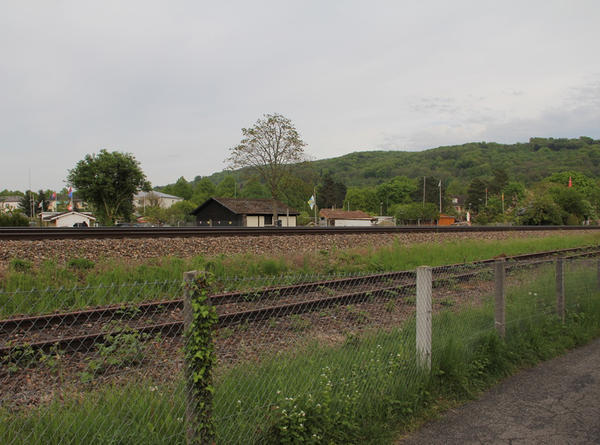BUILDING ON THE BUILT. PROJECTS FOR THE TRANSFORMATION OF THE AGGLOMERATION OF BASEL FROM WITHIN
FS2015 achtung: die Landschaft 4/4 final review.

Wednesday 27.05. ARchENA. 9.30-16.00
with Jacques Herzog, Pierre de Meuron, Philipp Ursprung, Günther Vogt,
Beat Aeberhardt (City architect Basel-Stadt)
Studio Brief
In Entfaltung einer Planungsidee (1963) Ludwig Hilberseimer tackles the possibility of transforming the structure of the existing city. To do that, he points out two main possible directions: the first starts from the outside, expanding the city towards the un-built urban territory; the second tackles the city from within, through the gradual transformation of its constitutive elements such as the houses, the streets, the parks etc. The latter represents Hilberseimer’s pragmatic and realist approach and has been at the origin of several of his proposals for the American suburbia. Similarly to this approach, during the summer semester 2015 achtung: die Landschaft aimed at the possible transformation of the Swiss city from within, limiting building activity only on what has already been built. Such hypothesis requires a twofold clarification: on the one hand the definition of what is un-built and what built; on the other the assumption that within the realm of the built, one can still discover the potential to accommodate further growth. In order to answer to this question, the studio started by carefully exploring a selected section of Basel’s agglomeration searching for ‘sites of potential’. These – either infrastructure, low-density areas, interstitial spaces but also left-over spaces or vacancies that because of their conditions could be considered as built – have been chosen not only for their capacity to accommodate new inhabitants or functions, but also for their possible participation to the transformation of the agglomeration at large. Students has been asked to develop design proposals that are not dictated by given or abstract quantities, but rather by the possibility of developing on these sites specific urban interventions able to redeem what is at present a neglected condition into a fully urban space. Projects advance ideas for new forms of density, of coexistence between currently separated functions, of new living and working typologies.
Site
The selected site for the semester is the city of Basel and more specifically the area comprised between Basel and Grenzach-Wyhlen (D). This region corresponds to the last section of the Hochrhein-valley and marks to a large extent the border between Switzerland and Germany, and more specifically between the municipality of Basel and the one of Riehen (BS). Because of its proximity and quick connection to the city, the area is certainly one of the most interesting locations for a project where Basel’s future expected population growth could be accommodated and at the same time becoming the trigger for a process of rethinking of the city at large. The chosen site is characterized by the presence of several railway tracks and other mobility infra- structure facilities and is located just few hundreds meter away from the Basel Roche campus. More specifically several sites reveal the potential to be transformed: among these, the bus depot along the Rankstrasse, various now abandoned railway tracks, few interstitial spaces between road or railway lines. All these sites become the seat of projects that attempted at devising new forms of residential, living and working spaces that could be very attractive to many and become exemplary of possible way to use more efficiently traditionally neglected spaces of the city. Moreover the area is characterized by the presence of modest yet radical social housing experiments from the 19th century that could be seen as a valuable architectural legacy to be revisited.
Participants
Lorenz Brunner, Philipp Frisch, Ursin Huonder, Ricardo Joss, Leticia Lopez, Aurelia Müggler, Mihai Radulescu, Michael Thoma, Antoine Bruno Weber, Nathanel Weiss, Chunhui Liu
NEWS: 17.02.15, PEOPLE: PROF. JACQUES HERZOG, PROF. PIERRE DE MEURON, CHARLOTTE VON MOOS, LISA EULER, MARTINO TATTARA, METAXIA MARKAKI

